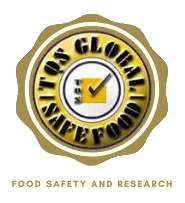Research and Development forms the backbone of consulting. Constant up-skilling is important to be able to serve the customers with the latest and out-of-the-box services.

New Product Development
Our dedicated teams provide the required flexibility in helping customers to develop new
products and improving existing products along with shelf life determination and extension of
product shelf life.
We understand the needs of our clients and have developed a certain methodology, based
upon our past experiences and knowledge, for developing and optimizing projects and products
which range from small firms to large corporations. Our specialized departments and
constituent teams of handpicked experts are committed in delivering high quality, reliable, and
cost-effective product development services to all our worldwide clients.

Recipe Formulation
Recipe Formulation is a critical step in any product development; however, it is a complex
process and formulators face a great amount of challenges when developing a recipe.
TQS Global develops the idea for you and develop it into a full, market-ready concept.
Understanding all the aspects of the product and ingredients helps us to accurately develop and
formulate a commercially viable recipe that will work with your overall business strategy.
During this process, we:
- Identify key needs and requirements
- Project figures for pricing targets, production quantities, and terms.
- Develop a range of potential concepts based on brainstorming sessions with our experts.
- Work together with you to identify and develop the best concept.
- Take into consideration various requirements from different teams, from marketing, quality to regulatory affairs.
Once the concept has been confirmed, our team of scientists gets to work on developing the recipe. During this process, we:
- Perform a price analysis, source ingredients, identify cost reduction opportunities, and carry out product analysis.
- Develop initial samples, perform laboratory stability testing, reformulate as necessary, optimize the formula, and deliver samples in order to test and review.
- Produce final samples and deliver final commercial recipe with estimated end pricing of product ingredients and compound cost.

Nutritional Profiling
- Nutrition profiling is a keystone to assure compliance with nutritional panel regulations.
- Nutrient profiling is used internationally to classify foods based on their nutrient content and can help to identify healthier foods.
- Energy and nutrient information enables optimization of both food creation and new product development, resulting in time and investment savings.
- Knowing the nutritional profile of the product will facilitate adapting recipes, dishes, and menus to specific needs (low calorie/low fat, etc.)
-
Nutrient profile models fall into two groups, which generate descriptions that refer:
- to the nutrient levels in foods (e.g. high fat; low fat; reduced fat; source of fibre; high in fat, sugars or salt/sodium; energy dense, nutrient poor)
- directly to the effects of consuming the food on a person’s health (e.g. healthy, healthier option, less healthy
- A full NP is generated for the product(s) with all mandatory nutrients.
- Includes serving size determination plus the number of servings per container.
- The ingredient list will be generated in descending order of weight, following the current requirements
- The potential health benefits of the product will be highlighted to support nutritional marketing.
- We identify if the food product meets the established criteria to qualify for nutrient content and/or a health claim.
- Allergen & Gluten Declaration
- Food allergy and food intolerance prevalence are on the rise. Restaurants and other retail food establishments benefit economically from becoming allergy-friendly.

Proximate analysis
Originally the most extensive information about the composition of foods was based on a
system of analysis described as the proximate analysis of foods, which was devised over 100
years ago by two German scientists, Henneberg and Stohmann. Recently, new analytical
techniques have been introduced and the information about food composition is rapidly
expanding. However, the system of proximate analysis still forms the basis for the statutory
declaration of the composition of foods.
This system of analysis divides the food into six fractions: moisture, ash, crude protein, ether
extract, crude fibre, and nitrogen-free extractives. The moisture content is determined as the
loss in weight that results from drying a known weight of food to constant weight at 100 C. This
method is satisfactory for most foods, but with a few, such as silage, significant losses of
volatile material may take place.
The ash content is determined by ignition of a known weight of the food at 550 C until all
carbon has been removed. The residue is the ash and is taken to represent the inorganic
constituents of the food. The ash may, however, contain material of organic origin such as
sulphur and phosphorus from proteins, and some loss of volatile material in the form of
sodium, chloride, potassium, phosphorus, and sulphur will take place during ignition. The ash
content is thus not truly representative of the inorganic material in the food either qualitatively
or quantitatively.
Our experts help you with proximate analysis with customised counselling towards
understanding the details of fragmentation.

